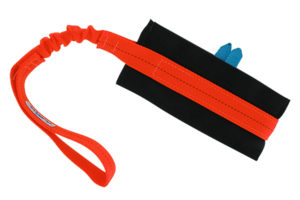We are often asked the question:
“I am wondering if your classes will require me to use a clicker. I guess I am too uncoordinated to manage the clicker, treats, and leash all at once. Is clicker use optional at your school?”
… and the answer is a resounding “Yes, clicker use is optional.”
We do use clickers in our classes and try our best to help our students get over their concerns about coordination. Let me tell you, if I can conquer a clicker (arthritic fingers, inconsistent timing, etc.), anyone can! However, it’s difficult enough to be handling a 5-month-old puppy and listening to the instructor and learn, without struggling with a clicker. So we are flexible. And patient.
The clicker is merely a tool that helps us teach the dog things that we can teach without it. In my experience, the clicker speeds up the dog’s learning because of its uniqueness (a sound never heard except in the context of learning (with treats to follow), but you can teach your dog good behavior with the use of a special word instead of the clicker. Your instructor will help you with this.



